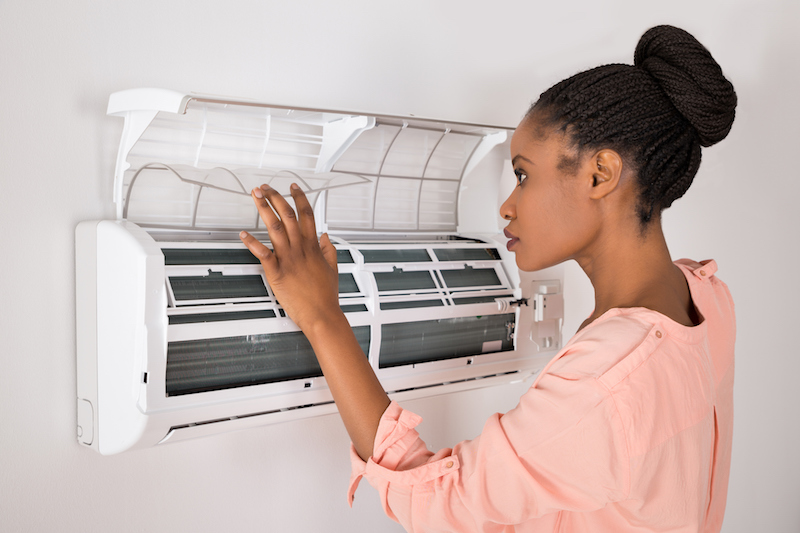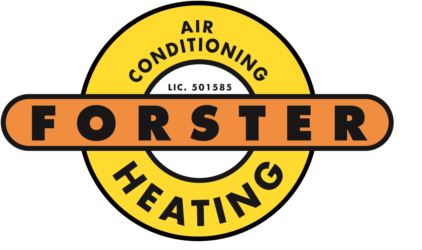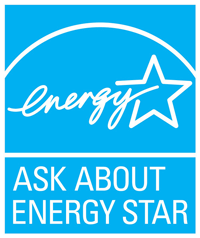
You shouldn’t be forced to give up comfort or drain your wallet to keep your house at the right temperature during warm days.
But what is the best setting, exactly? We discuss recommendations from energy professionals so you can find the best setting for your home.
Here’s what we suggest for the most energy-efficient setting for air conditioning in Auburn.
Recommended Thermostat Settings for Summer
Most households find using the thermostat at 72-73 degrees is most comfortable. However, if there’s a sizeable difference between your indoor and exterior temps, your cooling costs will be larger.
These are our suggestions based on the U.S. Department of Energy (DOE) and ENERGY STAR®.
While at home: 78 degrees. While that appears too high, there are methods you can keep your house pleasant without having the air conditioner running constantly.
Keeping windows and curtains down during the day keeps chilled air where it needs to be—indoors. Some window solutions, including honeycomb shades or plantation shutters, are designed to deliver added insulation and enhanced energy conservation.
If you have ceiling fans in your residence, the DOE says you can increase thermostat temperatures about 4 degrees higher without compromising comfort. That’s since they freshen by a windchill effect. Since they cool people, not areas, shut them off when you leave a room.
If 78 degrees still seems too uncomfortable on the surface, try conducting an experiment for approximately a week. Get started by raising your setting to 78 degrees while you’re at your house. Then, gradually turn it down while following the suggestions above. You might be shocked at how comfortable you feel at a warmer temperature setting.
While away: 88 degrees. There’s no reason to keep the air conditioning going all day while your home is empty. Turning the temperature 7–10 degrees higher can save you anywhere from 5–15% on your AC costs, according to the DOE.
When you come home, don’t be tempted to switch your thermostat below 78 to cool your home faster. This isn’t productive and typically leads to a bigger electricity cost.
A programmable thermostat is a helpful way to keep your temperature in check, but it requires setting programs. If you don’t set programs, you might forget to change the set temperature when you leave.
If you’re looking for a handy resolution, consider installing a smart thermostat. This thermostat links with your phone, so it is aware when you’re at your house and when you’re away. Then it instinctively adjusts temperature settings for the best savings. How much exactly? An estimated $180 yearly on heating and cooling, according to ENERGY STAR.
Another perk of using a smart thermostat? You can use your phone to keep an eye on and regulate temperature settings from just about anywhere.
While sleeping: Around 70 degrees. While ENERGY STAR recommends 82 degrees, that could be too uncomfortable for many families. Many people sleep better when their sleeping space is chilled, so that’s why the National Sleep Foundation suggests 60–67 degrees. But that might be too chilly, based on your PJ and blanket preference.
We advise using an equivalent test over a week, putting your thermostat higher and gradually turning it down to select the ideal temp for your residence. On pleasant nights, you could discover keeping windows open at night and running a ceiling fan is a better option than using the AC.
More Ways to Use Less Energy This Summer
There are extra ways you can conserve money on cooling bills throughout hot weather.
- Buy an energy-efficient air conditioning system. Central air conditioners only last about 12–15 years and get less efficient as they get older. An updated air conditioner can keep your residence cooler while keeping energy costs down.
- Set annual air conditioner maintenance. Routine air conditioner maintenance keeps your unit working properly and might help it work at better efficiency. It might also help extend its life cycle, since it enables professionals to discover little problems before they lead to a major meltdown.
- Change air filters often. Read manufacturer instructions for switching your air filter. A dirty filter can lead to your system short cycling, or run too frequently, and increase your electricity.
- Check attic insulation levels. Just about 90% of homes in the USA don’t have enough insulation, according to the Insulation Institute. Most southern climates need 13–14” of attic insulation, while northern climates need 16–18”.
- Have your ductwork inspected. Ductwork that has loosened over time can seep cool air into your attic, walls or crawl space. This can result in big comfort troubles in your residence, including hot and cold spots.
- Seal cracks, doors and windows. Keep warm air where it belongs by closing cracks. You can also caulk or weather strip doors to seal more cool air inside.
Save More Energy During Hot Weather with Forster Heating
If you need to use less energy during warm weather, our Forster Heating experts can assist you. Get in touch with us at 530-885-8081 or contact us online for additional details about our energy-saving cooling solutions.



